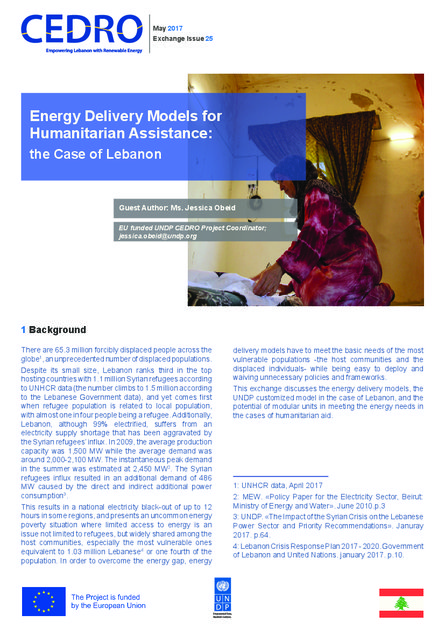
Despite its small size, Lebanon ranks third in the top hosting countries with 1.1 million Syrian refugees according to UNHCR data (the number climbs to 1.5 million according to the Lebanese Government data), and yet comes first when refugee population is related to local population, with almost one in four people being a refugee. Additionally, Lebanon, although 99% electrified, suffers from an electricity supply shortage that has been aggravated by the Syrian refugees’ influx. In 2009, the average production capacity was 1,500 MW while the average demand was around 2,000-2,100 MW. The instantaneous peak demand in the summer was estimated at 2,450 MW2. The Syrian refugees influx resulted in an additional demand of 486 MW caused by the direct and indirect additional power consumption.
This results in a national electricity black-out of up to 12 hours in some regions, and presents an uncommon energy poverty situation where limited access to energy is an issue not limited to refugees, but widely shared among the host communities, especially the most vulnerable ones equivalent to 1.03 million Lebanese4 or one fourth of the population. In order to overcome the energy gap, energy delivery models have to meet the basic needs of the most vulnerable populations -the host communities and the displaced individuals- while being easy to deploy and waiving unnecessary policies and frameworks.
This exchange discusses the energy delivery models, the UNDP customized model in the case of Lebanon, and the potential of modular units in meeting the energy needs in the cases of humanitarian aid.